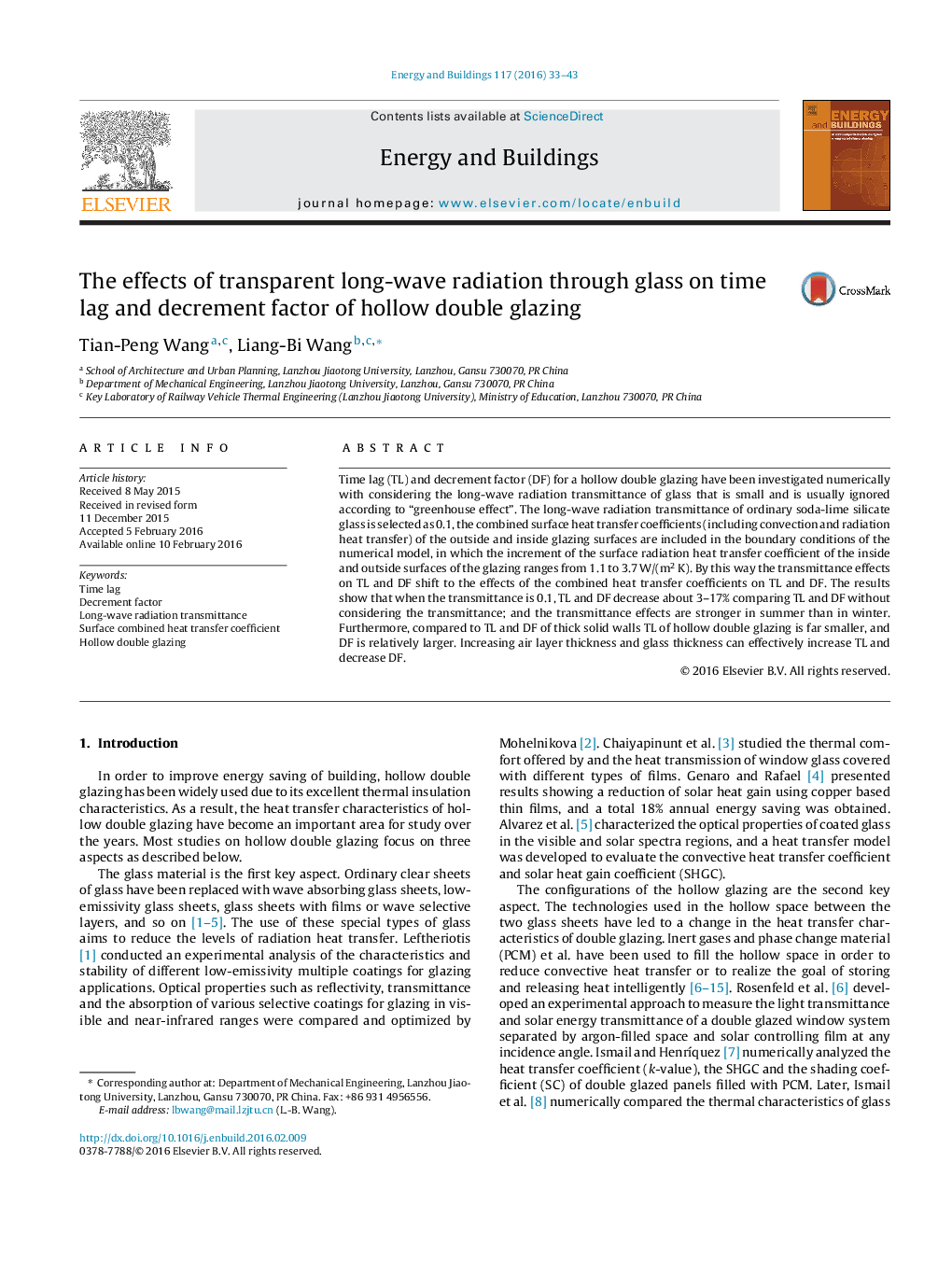| Article ID | Journal | Published Year | Pages | File Type |
|---|---|---|---|---|
| 6730289 | Energy and Buildings | 2016 | 11 Pages |
Abstract
Time lag (TL) and decrement factor (DF) for a hollow double glazing have been investigated numerically with considering the long-wave radiation transmittance of glass that is small and is usually ignored according to “greenhouse effect”. The long-wave radiation transmittance of ordinary soda-lime silicate glass is selected as 0.1, the combined surface heat transfer coefficients (including convection and radiation heat transfer) of the outside and inside glazing surfaces are included in the boundary conditions of the numerical model, in which the increment of the surface radiation heat transfer coefficient of the inside and outside surfaces of the glazing ranges from 1.1 to 3.7Â W/(m2Â K). By this way the transmittance effects on TL and DF shift to the effects of the combined heat transfer coefficients on TL and DF. The results show that when the transmittance is 0.1, TL and DF decrease about 3-17% comparing TL and DF without considering the transmittance; and the transmittance effects are stronger in summer than in winter. Furthermore, compared to TL and DF of thick solid walls TL of hollow double glazing is far smaller, and DF is relatively larger. Increasing air layer thickness and glass thickness can effectively increase TL and decrease DF.
Keywords
Related Topics
Physical Sciences and Engineering
Energy
Renewable Energy, Sustainability and the Environment
Authors
Tian-Peng Wang, Liang-Bi Wang,
